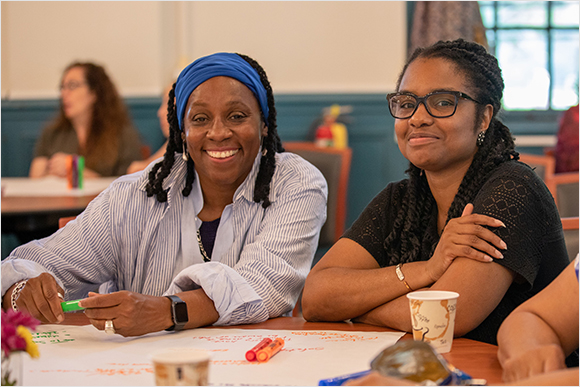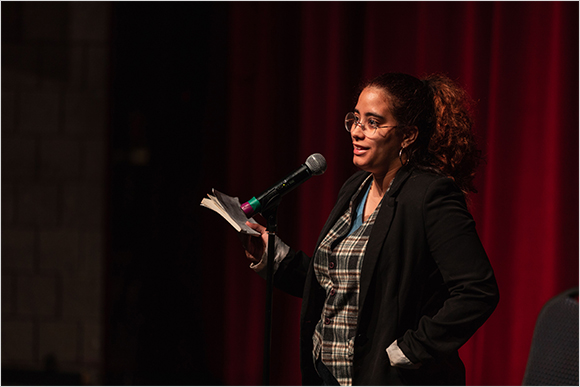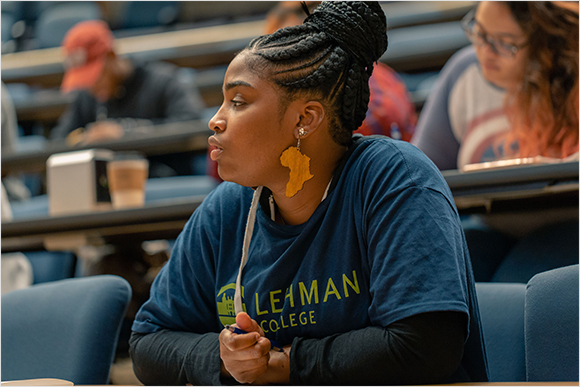|
We recently observed the national holiday honoring the Rev. Dr. Martin Luther King, Jr. It is a day that always calls for reflection, as well as celebration of the life of one of America’s greatest leaders. Reading the New York Times’ 1619 Project, one could conclude that, aside from the brief decade of Reconstruction after the Civil War and, a hundred years after that, the victories of the Civil Rights Movement of the 1960s, very little has changed, despite the efforts of King and countless others. In fact, the forces of reaction and hate of the Jim Crow South seem to be everywhere and on the rise in Ferguson, Charlottesville and in too many other places. Their targets now include immigrants, Muslims, and anyone representing the true diversity of America. Sentiments of exclusion and xenophobia, which arise from a primal fear of the other, ignorance, and a profound sense of disenfranchisement, have unfortunately been encouraged and exploited by leaders around the globe: in our own country, in Europe and elsewhere.
Diversity is a word that has come to stand for many things, including equitable representation of ideas, access and success in higher education. It is perhaps over-used, and certainly can be misused. Equity is another word that some find avoids those pitfalls and better captures our intent as we discuss and choose our actions within a public urban institution of higher education.
The racial, ethnic and class diversity at Lehman College, a Hispanic-Serving Institution (HSI), reflects much of what is possible when opportunity and success are shared equally by all, and it stands in contrast to much of what we see in the headlines every day. In fact, there are not many places where race and ethnicity are directly discussed in a way that is transparent and direct. This is the first of what I hope will be many good faith efforts to continue a necessary dialogue on a topic essential to our future as a College and also to the future of the nation.
I had reason to reflect on this at the recent annual meeting of the Association of American Colleges and Universities. Shaun Harper, executive director and founder of the University of Southern California Race and Equity Center, discussed the Center’s ongoing efforts to measure campus climates with regard to race. He described the very real fear of saying the wrong thing, if in fact, conversations directly related to race were happening at all and a dearth of college courses directly discussing or delving into the sometimes uncomfortable but very necessary dynamics that are involved when we discuss race and equity.
Reflecting on his remarks and other discussions I have had at Lehman College and beyond is a reminder that numerical diversity alone does not guarantee that we are doing all that we can to oppose movements that marginalize whole groups of people. We have to be willing to acknowledge and genuinely look at what is imperfect, and in doing so, be prepared to push through our potentially personal discomfort in order to do more.
We often cite the ethnic and racial diversity of Lehman College’s student body, noting that the overwhelming majority of students are students of color, including Latino, Black, Asian, Muslim and other ethnicities, representing some 130 global regions. Other dimensions of diversity -- including socioeconomic standing, faith, gender identification, and age -- are also frequent points of consideration when describing what makes us diverse as a teaching and learning institution.
 Faculty and Staff at the LGBTQ World Café in 2019 Faculty and Staff at the LGBTQ World Café in 2019
The discussion of diversity in higher education at Lehman matches an ongoing national one on the same topic. This conversation arises partly from an emerging understanding that the faculty, staff and administration of a college or university should approximate the diversity of the students and communities they serve. Parallel to that understanding is the idea that university curricula should also in some way reflect the diversity of the student body, and consequently should adjust over time to meet student interests and concerns.
There have been extensive national academic debates about how best to achieve student, faculty, and curricular diversity in higher education. Too often, actions have failed to match the rhetoric. In his recent book, The Years that Matter Most, for example, Paul Tough points out that the elite Ivy-plus universities have maintained enrollments of underrepresented groups at eight percent of their student body for decades, despite their much-publicized diversity recruitment initiatives.
In the debates about faculty and curriculum diversity, one of the fundamental questions is, “Who gets to decide what is taught and who teaches it?” Hiring and the curriculum are generally determined by the faculty through shared governance with an institution’s administration and students, as is the case at Lehman. And those student voices matter when it comes to hiring and curricula.
In 1968, Lehman College was the first CUNY college to create Ethnic Studies departments after Black and Puerto Rican students, with faculty and administration support, demanded them. Those departments – Africana Studies and Latino and Latin American Studies – have flourished ever since. In 2020, Lehman students engage in shared governance in various ways – as members of the Student Government Association, the College Senate, and several different College and departmental committees, and in the voices they raise on their own and in student clubs and organizations.
 Project X Poetry Slam
Project X Poetry Slam
Let me share with you my recent experience with one such student organization. It exemplifies the way student voices can be heard by the faculty and administration, and shows that substantial actions can result, just as they did in 1968. It highlights the English Department, and its important work, and I hope it will be seen as one model of how we can forge new and exciting pathways for Lehman College.
Just before Winter Break, I was one of the recipients of a letter written by the leaders of the Latinx Student Alliance asking for a discussion of what they saw as a lack of racial diversity in the English Department faculty. The students also argued that the department’s core curriculum was unbalanced: it required three British literature courses and one American literature course, but its courses in Latino, African American, Asian American, and Postcolonial literatures were electives, and students had to take only one of these.
I had the great pleasure of discussing the issues raised in the letter with the students who wrote it along with their faculty advisor, English Assistant Professor Melissa Castillo Planas. At that meeting, Provost Peter Nwosu, Arts and Humanities Dean James Mahon, English Department Chair Paula Loscocco and I listened to the very real challenges and aspirations of the impressive leaders of the Latinx Student Alliance, all of them passionate English majors.
In addition to arguing for a more diverse curriculum, students drew attention to how it feels to be students of color in classes where professors, frequently white, can at times demonstrate a lack of sensitivity about the ways in which white-dominated academic culture can adversely affect students of color. They talked about how empowered they feel when more of their instructors are professors of color and therefore more likely to share common social and cultural ground. Their observations reinforced the way in which a successful learning environment has a number of important dimensions, including both the diverse content of the curriculum and the diverse instructors who lead them through it.
Although our discussion in December was specifically about the English Department, I believe these issues could and should be raised in relation to most if not all departments at Lehman. In fact, many of these same concerns about the College as a whole were raised by student leaders at the student leadership retreat in fall 2019. Embracing diversity and equity in staffing and curriculum is important in every part of the intellectual and creative life of the College.

2018 Leadership Retreat Participant
While Lehman has been acknowledged by the Chronicle of Higher Education for the racial and ethnic diversity of its managerial staff, our faculty is not as diverse as it could be across all schools and departments. But we are making progress and the English Department is an example of that. In the English Department, 31 percent of the faculty are currently faculty of color, a percentage likely to rise with the new faculty members the department is currently hiring in the areas of African American literature, Early/19th-Century American literature, and professional writing. In the face of longstanding structural barriers to racial and ethnic equity that have built up over time, that percentage reflects real efforts taken by the department in recent years, efforts that will continue going forward.
Similar efforts to diversify the curriculum are also underway in English, involving both faculty and students. Its faculty had a day-long retreat in January to discuss and plan, and a substantial curriculum revision is expected to reach the College Senate by late Spring or early Fall 2020. This kind of serious institutional change is hard work and takes real time and effort, as faculty and students collaborate to arrive at a curriculum they believe best serves students.
Later in 2020, I will give an update on the progress of those exciting efforts. As we strive to promote an academic culture in which we regularly evaluate the content, methodology, and efficacy of our curriculum and pedagogy, making the changes we find to be important at the level of both College and departments, and English is one of the College’s change-leaders.
Lehman is also a member of the National Center for Faculty Development and Diversity (NCFDD), which provides training and mentoring resources for faculty, including resources for engaging a diverse classroom. We are in the second year of our membership, joining more than 450 colleges and universities in the nation on this important work. I encourage all members of the faculty to take advantage of this resource by visiting the provost’s office webpage.
Beyond the makeup of the curriculum and staff, members of the faculty and staff have expressed their concerns about how Lehman College publicly reflects our faculty, staff and student body’s diversity. Last spring, a group of faculty members from the ACE Women’s Network raised concerns about the way our public spaces fail to call out and promote the actual diversity on campus. I met with them several times and out of those discussions a task force on public spaces was formed, including faculty, staff and students. They have now submitted their report, and in response, we will renovate a number of public spaces this spring so we and our guests will see displays with images and text that celebrate our diversity.
Another significant axis of diversity in our community is along lines of gender identity and sexual preference. We had a groundbreaking LGBTQ World Café in 2019, and I felt privileged to be a part of several discussions during that inaugural event at Lehman. I heard important voices that both affirmed Lehman as a place where there is greater freedom and acceptance than in many places, but where there can also be intolerance and bullying. I hope that was the first of many discussions on campus that lead to greater awareness and support for students, faculty and staff who may at times feel marginalized or even unsafe.
Michelle Alexander’s powerful Op-Ed, “Injustice on Repeat,” in a recent issue of The New York Times speaks to the parallel features of, and links between, mass incarceration and mass deportation. In the middle of the article she pauses at one point and to recount the many gains in civil rights in the past 60 years, yet she writes, “Everything has changed. And yet nothing has.” And that is where we are.
One sign of the commitment by members of the Lehman community to the focus of Alexander’s article is the highly engaged Re-Entry Committee chaired by Penny Prince of our Music department and Jane MacKillop of the School of Continuing and Professional Studies, which is developing ways for us to be a positive player in criminal justice reform. Last fall, the committee submitted a report to the provost, which will form the basis for a well-coordinated system of college care and support services to assist previously incarcerated men, women and youth to successfully matriculate at Lehman.
Of the many individuals on campus who regularly address issues around diversity, we are fortunate to have Professor Naomi Zack of the Philosophy Department. Prof. Zack identifies as a mixed-race person of color and she is one of the foremost scholars on race and philosophy in our country. She recently received the prestigious 2019-2020 Romanell Phi Beta Kappa Professorship Award, which sponsors three lectures and they will be offered in series titled, “A Philosophical View of Intersectionality” on campus on the afternoon of Wednesday, March 18. I strongly encourage everyone to participate, as intersectionality serves as the lens for viewing the interlocking oppressions that many members of the Lehman campus community encounter.
The evolution of CUNY leadership, too, offers encouraging signs of progress. I was privileged to attend a reception this fall where our Chancellor Félix Matos Rodríguez was honored by the American Association of State Colleges and Universities (AASCU) Hispanic Presidents Advisory Group. We also have two Latino Executive Vice Chancellors, and the entire CUNY senior leadership team has become very diverse. This past year we also sponsored Associate Dean Jaye Jones to participate in Diversifying CUNY’s Leadership: A CUNY Harvard Consortium, a program for rising university administrators of color that included two weeks at the prestigious Harvard Institutes for Higher Education’s Leadership.
We must have hope in the possibility that one day, this nation will fulfill the promises in its Declaration of Independence and Constitution, not just for the privileged elite for whom those documents were originally intended, but for everyone. But we also must face the realities of our world where the currents of racism, sexism, and all forms of bias are still strong, and with which many are still wholeheartedly in agreement. We may not have a profound impact outside the sphere in which we live, but at least inside that sphere, we must confront our realities and continue to change.
As the location where the Declaration of Human Rights was prepared, we claim that aspiration as our own. And as we commemorate Black History Month, we celebrate our diversity, and we will do everything we can to see that it isn’t just a background assumption, but that we actively engender an environment of equality where every dimension of diversity is valued, respected and protected.
Daniel Lemons
@LehmanPresident
Previous messages from President Lemons can be found here. |